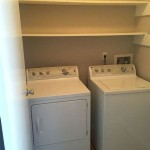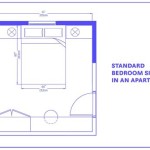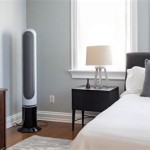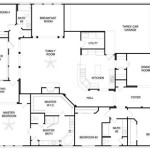Cute Side Tables For Bedroom: A Comprehensive Guide
Side tables, often understated elements in bedroom décor, play a significant role in functionality and aesthetics. Beyond their practical purpose of holding lamps, books, and personal belongings, they contribute significantly to the overall ambiance of the space. Selecting the right side table requires careful consideration of size, style, material, and features to ensure it complements the existing bedroom decor and meets individual needs. This article delves into the various aspects of choosing a "cute" side table for the bedroom, providing comprehensive guidance to make an informed decision.
The term "cute," in this context, extends beyond mere visual appeal. It encompasses designs that evoke a sense of warmth, charm, and personality. These tables often incorporate unique shapes, playful colors, interesting textures, or whimsical details that add a touch of character to the room. The goal is to find a side table that not only serves its practical function but also acts as a delightful accent piece that reflects individual style.
Understanding Style and Aesthetics
The first step in selecting a cute side table is to determine the desired aesthetic. Various styles cater to different preferences, from minimalist and modern to rustic and vintage. A clear understanding of the overall design theme of the bedroom will guide the selection process and ensure that the side table seamlessly integrates into the existing decor.
For a modern bedroom, simple, geometric shapes and clean lines are often preferred. Materials like metal, glass, or sleek wood finishes complement the minimalist aesthetic. Colors tend to be neutral, such as white, gray, or black, with occasional pops of vibrant hues. A cute side table in this style might feature a circular metal frame with a glass top or a cube-shaped wooden table with a hidden storage compartment. The emphasis is on functionality and understated elegance.
Rustic bedrooms, on the other hand, embrace natural textures and earthy tones. Wood, especially reclaimed wood with visible grains and imperfections, is a common material. Woven baskets, distressed finishes, and wrought iron accents add to the rustic charm. A cute side table in this style might be a small wooden stump with a natural finish or a table made from repurposed barn wood. The focus is on creating a warm and inviting atmosphere with a touch of vintage appeal.
Bohemian bedrooms are characterized by their eclectic mix of patterns, colors, and textures. Woven rugs, macrame wall hangings, and vibrant textiles are common elements. A cute side table in this style might be a small, intricately carved wooden table from a faraway land or a table adorned with colorful tiles. The key is to embrace individuality and create a space that reflects a free-spirited personality.
Scandinavian bedrooms emphasize simplicity, functionality, and natural light. Light-colored woods, such as birch or pine, are commonly used, and designs are often minimalist and uncluttered. A cute side table in this style might be a simple wooden table with tapered legs or a wall-mounted shelf that doubles as a side table. The focus is on creating a serene and calming space with a focus on functionality.
Beyond these specific styles, numerous other aesthetics can be incorporated, such as French country, coastal, or Hollywood glam. The most important aspect is to choose a style that resonates with personal tastes and complements the existing bedroom decor. Once the style is determined, the selection process becomes more focused and efficient.
Considering Functionality and Features
While aesthetics are important, the functionality of the side table should not be overlooked. The primary purpose of a side table is to provide a convenient surface for placing essential items within easy reach. Consider the specific needs and habits to determine the desired features and storage options.
Storage is a key consideration for many. Side tables with drawers, shelves, or cabinets offer valuable storage space for books, magazines, electronics, and other personal belongings. A side table with a single drawer can be sufficient for storing small items, while a larger table with multiple drawers can provide more comprehensive storage options. Shelves are ideal for displaying books or decorative items, while cabinets offer concealed storage for items that are best kept out of sight.
The size of the side table is also crucial. It should be proportionate to the size of the bed and the overall room. A side table that is too large can overwhelm the space, while a side table that is too small may not provide adequate surface area. The height of the side table should also be considered. It should be approximately the same height as the mattress to ensure that items are easily accessible from the bed.
Another important feature to consider is the surface material. Wood, metal, glass, and laminate are common options, each with its own advantages and disadvantages. Wood provides a warm and natural look, but it can be susceptible to scratches and stains. Metal is durable and easy to clean, but it can feel cold and industrial. Glass is elegant and modern, but it can be fragile and prone to fingerprints. Laminate is an affordable and versatile option, but it may not be as durable as other materials.
Additional features to consider include built-in lighting, USB charging ports, and adjustable shelves. Built-in lighting can eliminate the need for a separate bedside lamp, saving space and creating a streamlined look. USB charging ports provide a convenient way to charge electronic devices without having to search for an outlet. Adjustable shelves allow for customization of storage space to accommodate items of different sizes.
Exploring Materials, Colors, and Finishes
The material, color, and finish of the side table play a significant role in its overall appearance and durability. Different materials offer different aesthetic qualities and levels of maintenance. Colors can evoke different emotions and create different moods. Finishes can enhance the natural beauty of the material and protect it from wear and tear.
Wood is a popular choice for side tables due to its versatility, warmth, and natural beauty. Different types of wood, such as oak, maple, cherry, and walnut, offer different grain patterns and colors. Light-colored woods, such as birch and pine, are often used in Scandinavian and modern bedrooms, while darker woods, such as mahogany and walnut, are often used in traditional and formal bedrooms. The finish of the wood can also affect its appearance. A natural finish highlights the natural grain of the wood, while a painted finish can add a pop of color or create a more uniform look.
Metal is another popular choice for side tables, particularly in modern and industrial bedrooms. Metals such as steel, iron, and aluminum are durable, strong, and easy to clean. Metal side tables can be finished in a variety of colors, such as black, white, silver, or gold. A brushed metal finish can add a touch of texture and sophistication, while a polished metal finish can create a sleek and modern look.
Glass is often used for the tops of side tables, creating a light and airy feel. Glass can be clear, frosted, or tinted, and it can be tempered for added strength and safety. A glass top can be combined with a wooden or metal frame to create a stylish and modern look.
The color of the side table should complement the overall color scheme of the bedroom. Neutral colors, such as white, gray, and beige, are versatile and can be easily incorporated into any decor. Bold colors, such as red, blue, and green, can add a pop of personality and create a focal point. Consider the existing colors in the room, such as the wall color, bedding, and curtains, when choosing the color of the side table.
The finish of the side table can also affect its appearance and durability. A matte finish is non-reflective and provides a soft, understated look. A glossy finish is reflective and creates a shiny, polished look. A distressed finish gives the side table a vintage or antique appearance. Choose a finish that complements the overall style of the bedroom and protects the side table from wear and tear.
In addition to these common materials, other options to consider include acrylic, rattan, and woven materials. Acrylic side tables are lightweight, durable, and transparent, adding a modern and minimalist touch. Rattan side tables add a natural and bohemian feel. Woven side tables offer a unique texture and visual interest.
Ultimately, the choice of material, color, and finish depends on personal preferences and the overall style of the bedroom. Consider the pros and cons of each option to make an informed decision that complements the existing decor and meets individual needs.

Stylish Nightstands For Every Bedroom West Elm
Twilight Bedside Table Kids Bedroom Storage

Side Tables Creative Resin Table Cute Cat Coffee For Living Room Bedroom Nursery Bedsi

Bedside Table Decor Ideas You Can Easily Recreate

20 Best Small Bedside Tables For Bedrooms
.jpg?strip=all)
Nightstand Diaries The Sleep Essentials Ad Editors Can T Live Without Architectural Digest

Nightstand With Two Drawers Cute Wooden For Kids End Table Side Versatile Bedside Bedroom

Stylish Nightstands For Every Bedroom West Elm

Side Table Decor Ideas To Make Your Home Look Amazing

2 Drawer Nightstand Elegant Upholstered Bedside Table Bedroom End Tables With Cute Round Natural Wood Knobs And Legs Soft Linen Fabric Night Stand Beige Walmart Com








